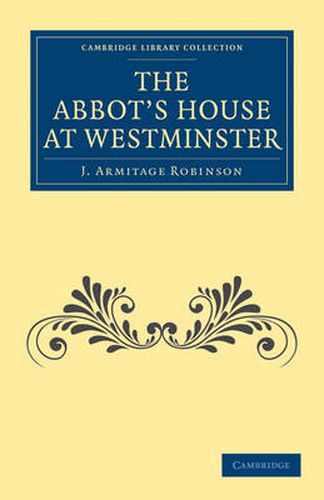Readings Newsletter
Become a Readings Member to make your shopping experience even easier.
Sign in or sign up for free!
You’re not far away from qualifying for FREE standard shipping within Australia
You’ve qualified for FREE standard shipping within Australia
The cart is loading…






In this 1911 work, J. Armitage Robinson uses architectural and documentary sources to discuss the history of the abbot’s buildings at Westminster Abbey. The medieval monastic remains are extensive, but have been considerably modified over the centuries. The abbey muniments provide much information on the building’s history, and Robinson includes many documents, both medieval and post-Reformation, to trace the development of the complex and how it was used. As dean of the abbey, Robinson had unprecedented access, and so was able to work out the architectural history more fully than had been possible in previous studies. As the abbey grew in importance and wealth, so the status of the abbot grew, necessitating grander buildings for entertaining. The medieval abbey must have been a continual building site, to judge by the frequent references to structural work in the accounts. This is a valuable study of an important surviving medieval building.
$9.00 standard shipping within Australia
FREE standard shipping within Australia for orders over $100.00
Express & International shipping calculated at checkout
In this 1911 work, J. Armitage Robinson uses architectural and documentary sources to discuss the history of the abbot’s buildings at Westminster Abbey. The medieval monastic remains are extensive, but have been considerably modified over the centuries. The abbey muniments provide much information on the building’s history, and Robinson includes many documents, both medieval and post-Reformation, to trace the development of the complex and how it was used. As dean of the abbey, Robinson had unprecedented access, and so was able to work out the architectural history more fully than had been possible in previous studies. As the abbey grew in importance and wealth, so the status of the abbot grew, necessitating grander buildings for entertaining. The medieval abbey must have been a continual building site, to judge by the frequent references to structural work in the accounts. This is a valuable study of an important surviving medieval building.